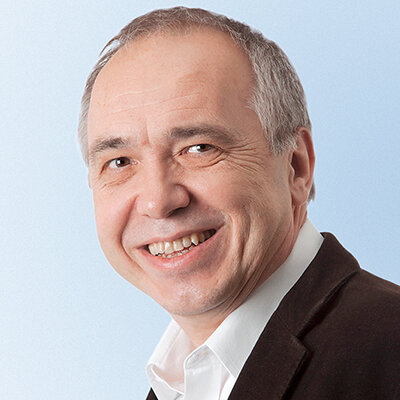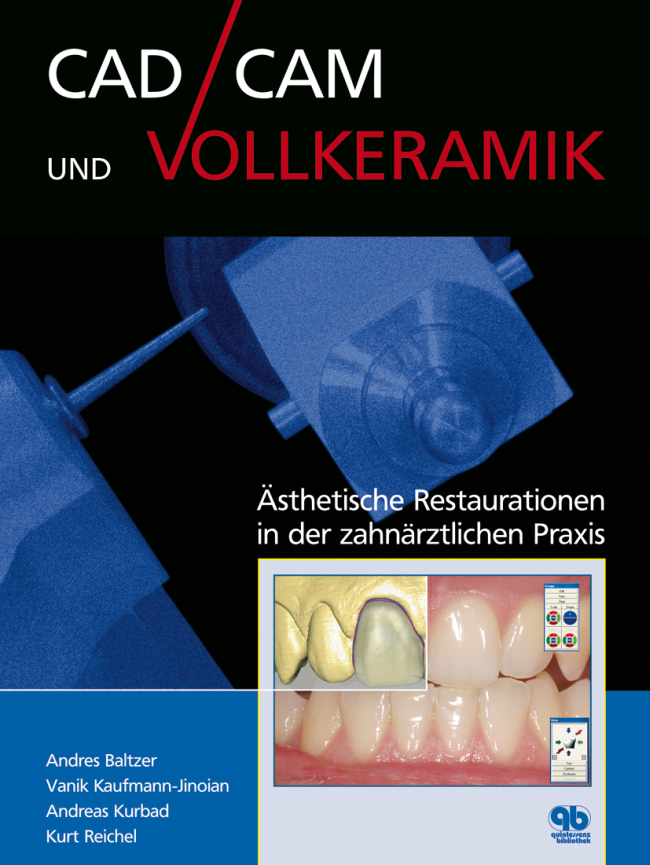International Journal of Computerized Dentistry, 2/2020
EditorialPubMed ID (PMID): 32555763Pages 103-105, Language: German, EnglishKurbad, AndreasInternational Journal of Computerized Dentistry, 2/2020
ApplicationPubMed ID (PMID): 32555768Pages 149-160, Language: German, EnglishKurbad, AndreasThe use of the latest digital technology is bringing about a fundamental change in diagnostic planning. Apps based on mobile devices such as IvoSmile (Ivoclar Vivadent) use augmented reality to make lasting improvements to therapy decisions on the basis of 'informed consent.' In addition to significantly facilitating work and saving resources, the possibilities of interactive communication are also being expanded. Further advances in this technology will also revolutionize the integration of design results into the definitive manufacturing process.
Keywords: smile design, esthetics, digital, veneer, augmented reality, therapy planning
QZ - Quintessenz Zahntechnik, 2/2019
ErfahrungsberichtPages 200-211, Language: GermanKurbad, AndreasDie Fräsbarkeit ist entscheidend für CAD/CAM-Materialien. Sie können unterschiedlich gut subtraktiv bearbeitet werden und unterscheiden sich in ihrer Biegefestigkeit und Ästhetik. In dem Beitrag werden verschiedene Materialien, wie Keramik, Zirkonoxid, Polymere, Komposit und Hybridkeramik vorgestellt und ihre Bearbeitungsmöglichkeiten sowie ihr ästhetisches Potenzial erörtert. In einem Fallbeispiel geht es um den Ersatz einer VMK-Krone durch eine Krone aus ästhetischem Zirkonoxid der dritten Generation (Katana, Kuraray Noritake).
Keywords: CAD/CAM, Keramik, Zirkonoxid, Polymer, Komposit, Hybridkeramik
QZ - Quintessenz Zahntechnik, 2/2019
StatementPages 242-243, Language: GermanRebbe, Tom / Hopp, Michael / Stachulla, Gerhard / Kurbad, AndreasExperten zu ihren Erwartungen zur IDS und ihren Forderungen an die DentalbrancheInternational Journal of Computerized Dentistry, 1/2019
PubMed ID (PMID): 30848258Pages 99-112, Language: German, EnglishKurbad, AndreasThe digital inhouse workflow consists of the components optical impression, computer-aided design (CAD) and machine manufacturing. In the sense of a time-optimized workflow, coordinated, closed systems prove to be the better solution. The company 3Shape (Copenhagen, Denmark) started with the existing Trios Intraoral Scanner and added both the software component Trios Design Studio and a number of 'trusted connection mills.' In combination with a collection of 'trusted materials,' a fast workflow with high clinical safety can ultimately be guaranteed. In order for a single-stage in-house restoration to be successfully completed, it is advisable to carry out thorough diagnostics and pretreatment; prepare the restoration by machine with a clear representation of the margin lines; organise the manufacturing process in a competent manner; and use an adhesive, target-oriented fastening strategy. Individual sections of the workflow can be delegated to specially and comprehensively trained medical staff. The increasing networking of digital processes creates very useful synergy effects such as the visualization of possible therapy results, follow-up, smile design, and the planning of implant restorations. A clinical case of a single-stage, in-house restoration with three posterior crowns is presented.
Keywords: intraoral scanners, CAD/CAM, chairside, in-house, digital dentistry, milling
International Journal of Computerized Dentistry, 1/2018
PubMed ID (PMID): 29610781Pages 57-70, Language: English, GermanKurbad, AndreasWhen determined by conventional jaw relation recording methods, the real position of the condyle remains largely unclear because the geometric relationship between the reference point and the position of the condyle is unknown. Sicat Function combines cone beam computed tomography (CBCT) data with digital jaw motion tracking (JMT) data and digital intraoral surface data. It is thus capable of measuring and visualizing patient-specific jaw movements. The corresponding patient-specific treatment position can be defined and integrated in various therapeutic appliances, eg, repositioning splints designed to increase the vertical dimension of occlusion (VDO).
Keywords: CAD/CAM, cone beam computed tomography (CBCT), jaw motion tracking (JMT), jaw relation recording, mandibular movement
QZ - Quintessenz Zahntechnik, 2/2017
EditorialPages 121-122, Language: GermanKurbad, AndreasInternational Journal of Computerized Dentistry, 2/2017
PubMed ID (PMID): 28630960Pages 201-213, Language: English, GermanKurbad, AndreasTechnology, integration, and workflowChairside computer-aided design/computer-aided manufacturing (CAD/CAM) technology requires an effective technical basis to obtain dental restorations with optimal marginal accuracy, esthetics, and longevity in as short a timeframe as possible. This article describes a compact, 5-axis milling machine based on an innovative milling technology (5XT - five-axis turn-milling technique), which is capable of achieving high-precision milling results within a very short processing time. Furthermore, the device's compact dimensioning and state-of-the-art mode of operation facilitate its use in the dental office. This model is also an option to be considered for use in smaller dental laboratories, especially as the open input format enables it to be quickly and simply integrated into digital processing systems already in use. The possibility of using ceramic and polymer materials with varying properties enables the manufacture of restorations covering all conceivable indications in the field of fixed dental prosthetics.
Keywords: CAD/CAM, milling unit, software, dental materials
International Journal of Computerized Dentistry, 1/2017
PubMed ID (PMID): 28294209Pages 93-105, Language: English, GermanKurbad, AndreasComputer-assisted technologies open up new possibilities for significantly improving the planning and realization of implant-supported dental restorations. Three-dimensional (3D) data acquired with an intraoral sensor can be merged with comparable data acquired by various radiographic imaging techniques. Implant planning with this type of support can generate data for the manufacture of surgical guides for dental implants. The guides can then be fabricated either by a third-party provider or by the implantologist directly, by using time- and cost-saving in-office systems. The use of surgical guides can improve the surgical implantation procedure considerably, and successful and reliable outcomes can be achieved more quickly.
Keywords: dental implantology, CAD/CAM, guided surgery, surgical guide, cone beam computed tomography (CBCT), implant planning
International Journal of Computerized Dentistry, 3/2016
PubMed ID (PMID): 27644182Pages 257-279, Language: English, GermanKurbad, AndreasThe use of materials with elastic properties for the fabrication of dental implant superstructures seems to be a promising way to reduce the functional occlusal forces on implants. Vita Enamic (Vita Zahnfabrik, Bad Säckingen), a hybrid ceramic material for CAD/CAM technology, is available in a special form that can be relatively easily combined with titanium (Ti) base connectors for the fabrication of abutment crowns and mesostructures. Thus, an easily manageable method is available for reducing peak loads on dental implant fixtures. Representative cases are presented to demonstrate the clinical workflows for a single- element solution (Ti base) and two-element solution (Ti base with mesostructure) for implant-supported crowns.
Keywords: dental implant, abutment, mesostructure, CAD/CAM, ceramic, hybrid ceramic




